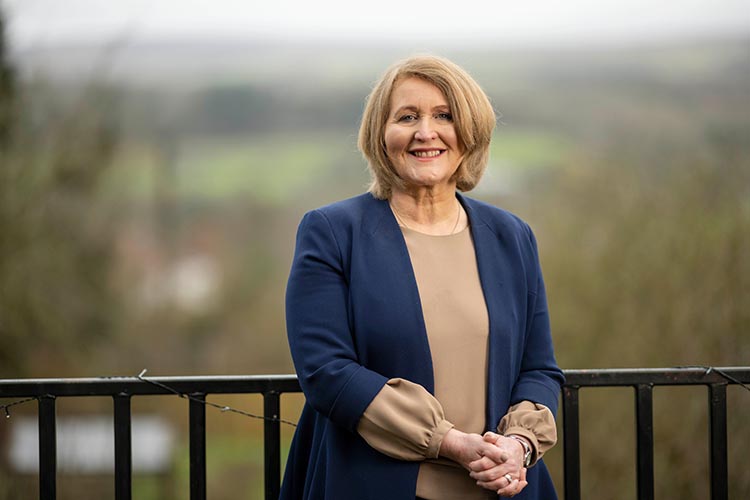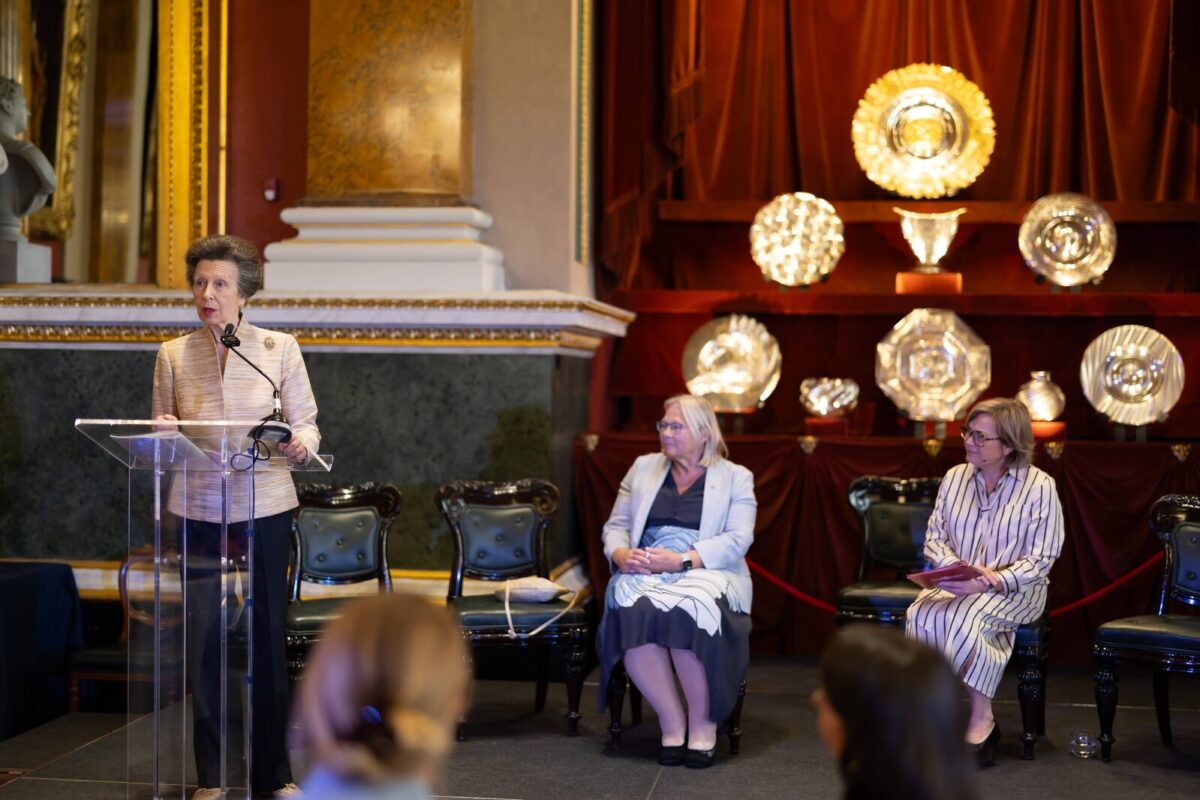Out of Harm’s Way? The current care system is unfit for purpose says Anne Longfield

Anne Longfield, chair of the Commission on Young Lives and the former Children’s Commissioner for England, is today (Wednesday 29th December) publishing ‘Out of Harm’s Way: A new care system to protect vulnerable teenagers at risk of exploitation and crime’, the first report of a year-long series of reports into teenagers at risk.
A children’s social care system that is supposed to protect vulnerable teenagers is unfit for purpose and frequently putting some children in greater danger, Anne Longfield’s Commission on Young Lives warns:
- Teenagers are increasingly being placed in care with the aim of being protected from county lines and criminal exploitation, only to find themselves more at risk of serious violence or harm.
- The children’s social care system is ‘handing over’ some vulnerable teenagers to criminals and abusers by moving them ‘out of area’ to live in dangerous unregulated accommodation that is targeted by criminals.
The Commission on Young Lives report warns that the current care system is unfit for purpose. Instead of protecting vulnerable teenagers, the system is handing over some children to criminals and abusers by moving them away from their families and communities, moving them too frequently from placement to placement and continuing to place them in accommodation that puts them at risk of harm – sometimes alongside adults and those involved with drugs and crime.
The report shows how an over-reliance on a limited number of residential places where demand significantly outstrips supply, inadequate early identification of those children at risk of exploitation, cuts to funding for early intervention programmes, outdated fostering models, a broken children’s home ‘market’ and the frequent criminalisation of children in the care system is allowing too many children in care to fall into danger.
The recent tragic murders of Arthur Labinjo-Hughes and Star Hobson have revealed a children’s social care system stretched to its limits.
In March 2021, there were 80,850 children in care in England, a 1% rise on the year before and the highest on record. Social services’ caseloads are increasing, and the costs of care are increasing, as 10–15-year-olds become the fastest growing group of children entering care and 16-and-17-year-olds with acute needs now make up 23% of children in care. With the average costs of care for many of these children at £200,000 per year, the cost of crisis care is escalating, leaving funds available for early intervention and prevention reduced year on year.
The report argues that a care system that was largely designed for small children is struggling to adapt to the needs of older children, including operating inflexible hours and work practices that are not suited to the often chaotic lives of vulnerable teens. It makes a series of recommendations to government, aimed at improving the children’s social care system and keeping teenagers safe from county lines, drug gangs and criminal exploitation.
Alongside the report, the Commission on Young Lives is publishing FOI data from 22 boroughs in London, where there is a particularly chronic shortage of care places for teenagers. The data shows how hundreds of children in care in London are being placed ‘out of borough’ and into semi-independent accommodation, which is often unregulated, unsuitable and a magnet for criminal and sexual exploiters.
This useful snapshot of the trends in children’s care reveals:
- In 2021-21 there were at least 1,932 children in care in London who were living in semi-independent accommodation – an increase over the last 3 years.
- That there were at least 4,340 children in care in London boroughs who spent some or all of their time in a placement out of their local borough.
- At least 1,516 in care in London boroughs spent some or all of their time in placements outside of Greater London.
- There is a significant gender and age split of children taken into care in London, with more boys taken into care than girls.
- In 2020/21, in the reporting London boroughs there were 1,341 over 12s taken into care and 655 over 16s – showing the increasing proportion of older adolescents making up the new care system cohort.
These figures are a low estimate and are likely to be much higher across London given some boroughs with the largest numbers of children in care did not respond to the FOI.
The report sets out a new offer to protect and support vulnerable teens, including:
- new duties for local authorities, schools, GPs and the police to give co-ordinated support for teenagers at risk and their families;
- Family Hubs and Supporting Families funding to be targeted at vulnerable teenagers;
- a new enhanced role for foster carers explicitly for teenagers and children on remand; and
- a new programme of community children’s homes.
‘Out of Harm’s Way’ also calls for:
- a ban on the use of unregulated accommodation for under-18s in care;
- the re-establishment of the Government’s defunct Serious Violence Taskforce;
- a new ‘Teenager in Need’ support form, and
- long-term funding for Violence Reduction Units and Young Adder programmes to reduce the numbers of teenagers at risk of exploitation.
The care system is failing Black boys the most
The Commission’s report also reveals how the care system is failing some Black boys. Evidence provided to the Commission describes how Black boys in care are more likely to go on and enter the youth justice system, and how this problem is worsening as the number of Black boys going into care rises.
The Commission also heard evidence that Black boys, who are already disproportionately affected by gang criminal exploitation, are often receiving different services, including police responses, and how Black teenage boys are less likely to be seen as victims and more likely to be viewed as offenders.
Black children are already more likely to be in care compared with their share of the under-18 population, while the number of Black children in care who were adopted dropped by 50% between 2015 and 2019. The issue of the disproportionate numbers of ethnically diverse children, and particularly Black young people, not just in the justice system but in every part of the social care landscape was raised throughout evidence sessions, suggesting that there is systemic racial bias in the system.
‘Out of Harm’s Way’ makes a series of recommendations:
- Calling on the Government to establish a ‘Vulnerable Teenagers At Risk’ ministerial taskforce, along the lines of the defunct Serious Violence Taskforce established by the previous Prime Minister.
- The Department for Education to establish a ‘teenagers out of harm’ programme that guarantees teenagers are not placed in inappropriate care placements, and a ban on the use of unregulated accommodation for all under18s in care.
- New duties and protections for co-ordinated support for teenagers at risk and their families from local authorities, schools, GPs and the police.
- The Department for Education to establish a new ‘Teenager in Care’ package of appropriate and high-quality modes of care for teenagers, accelerating its programme to increase the capacity of residential care for teenagers and financing new local community children’s homes.
- A national recruitment programme of specialist teen foster carers, encouraging youth workers and others with specialist knowledge and skills in working with young people to become foster carers, with a bespoke package of support.
- Extension of funding for Violence Reduction Units and Young Adder as part of a Safe Teenagers programme.
- Funding from the Supporting Families and Family Hubs programmes to prioritise support for vulnerable children with a particular emphasis on supporting families with teenagers at risk.
- The launch of a new Teenager at Risk helpline aimed at both vulnerable children and parents and families.

Anne Longfield, chair of the Commission on Young Lives, said:
“A children’s social care system that is supposed to protect vulnerable teenagers is frequently putting them in even greater danger. Often, we may as well be handing over children directly to ruthless gangs and criminals. It is unfit for purpose.
“We know the number of vulnerable teenagers at risk of exploitation entering the care system is becoming older, with more complex and expensive needs, and growing. We also know this is putting an enormous strain on the whole children’s social care system. The recent horrific murders of two young children show the tragic consequence of a child protection system stretched to its absolute limit.
“Resetting children’s social care in this new offer for teenagers will require determined action and some funding, but it is clear there are huge benefits not only to those vulnerable young people who need protection, but also to the public purse.
“We need a new offer for vulnerable teenagers in care and on the edge of care, and this report provides one.”











Responses